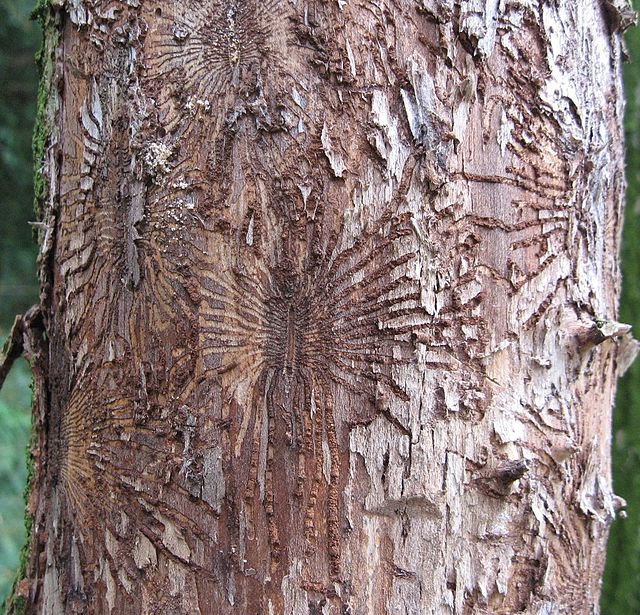Ulmus chenmoui W. C. Cheng, commonly known as the Chenmou, or Langya Mountain elm, is a small deciduous tree from the more temperate provinces of Anhui and Jiangsu in eastern China, where it is found at elevations below 200 m on the Langya Shan and Baohua Shan mountains. The tree was unknown in the West until 1979, when seeds were sent from Beijing to the De Dorschkamp research institute at Wageningen in the Netherlands.
Ulmus chenmoui
U. chenmoui foliage
Leaves and fruit of U. chenmoui
U. chenmoui samarae
Dutch elm disease (DED) is caused by a member of the sac fungi (Ascomycota) affecting elm trees, and is spread by elm bark beetles. Believed to be originally native to Asia, the disease was accidentally introduced into America, Europe, and New Zealand. In these regions it has devastated native populations of elms that did not have resistance to the disease. The name "Dutch elm disease" refers to its identification in 1921 and later in the Netherlands by Dutch phytopathologists Bea Schwarz and Christine Buisman, who both worked with professor Johanna Westerdijk. The disease affects species in the genera Ulmus and Zelkova, therefore it is not specific to the Dutch elm hybrid.
On a golden elm with characteristic leaf shedding
Beetle feeding galleries on wych elm trunk
An infected English elm at West Point, NY, July 2010
Salisbury Cathedral from Lower Marsh Close, 1820, Andrew W. Mellon Collection, National Gallery of Art, Washington, D.C.








